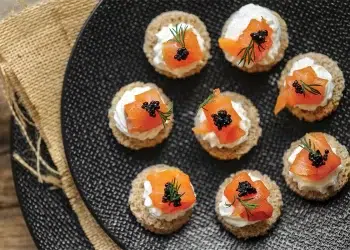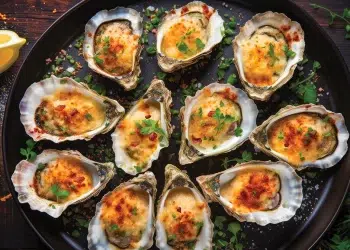Lifestyle
The tagline says it all: Southern Boating is more than a location; it’s a way of life! Boating is a lifestyle, and we’re here to show you how it’s done, the Southern Boating way. That means we care about the water that surrounds us, the people who support us, and the culture that fulfills us.
Mastering Boating Etiquette: A Guide to Responsible and Safe Practices
A guide to responsible mariner practicesBoating is an exciting activity that lets us connect with nature, explore new horizons, and...
Read moreDetailsElegant Canapé Recipes Perfect for Entertaining Aboard
These petite bites are perfect for entertaining aboard. My husband and I just returned from a cruise on Cunard’s Queen...
Read moreDetails4 Delicious Oyster Recipes: From Grilled to Casserole
Enjoy oysters either raw or cooked. All recipes serve 4. Going down the Intracoastal Waterway (ICW) to spend the winter...
Read moreDetailsFresh and Easy Chicken Salad Recipes for Any Weather
Serve as salads, sandwiches, or lettuce wraps! Each recipe serves four. I love chicken salads. They're easy to make and...
Read moreDetailsMaritimo M75 & M600: Luxury and Innovation at the Fort Lauderdale Boat Show
Maritimo | Fort Lauderdale International Boat Show (FLIBS) Preview Maritimo’s flagship model, the M75 Flybridge Motor Yacht, is making her...
Read moreDetailsThe GB60 by Grand Banks: A New Standard in Ocean Cruising
Grand Banks | Fort Lauderdale International Boat Show (FLIBS) Preview Grand Banks Yachts continues to define a new era of...
Read moreDetailsAzimut Seadeck 6: Luxury Yachting with a Lower Carbon Footprint
Azimut Yachts | Fort Lauderdale International Boat Show (FLIBS) Preview Yacht owners concerned with their environmental footprint now have an...
Read moreDetailsMJM Yachts’ 42 Astounds: A Downeast Dream with Unmatched Comfort
MJM Yachts | Fort Lauderdale International Boat Show (FLIBS) Preview The MJM Yachts 42 (46' 8" LOA, 12' beam) is...
Read moreDetailsPearl 82: Experience the Fast Lane in Unmatched Luxury
Pearl Yachts | Fort Lauderdale International Boat Show (FLIBS) Preview The Pearl 82 (83' LOA, 20' 10" beam) offers luxury...
Read moreDetailsAdventure Awaits: Cobia Boats Unveils Family-Friendly 285 CC and Versatile 265 CC Models
Cobia Boats | Fort Lauderdale International Boat Show (FLIBS) Preview Cobia Boats will have a trio of new models in...
Read moreDetailsW43 by Wiszniewski: A New Era in Luxury Dayboat Design
Wiszniewksi Yachts | Fort Lauderdale International Boat Show (FLIBS) PreviewThe W43 from Wiszniewksi Yachts is a premium dayboat crafted from...
Read moreDetailsSupercharge Your Tender with the BRABUS Shadow 1000 XC
BRABUS | Fort Lauderdale International Boat Show (FLIBS) PreviewYacht owners looking to supercharge their tender may want to put the...
Read moreDetailsLuxury Afloat: Riviera Yachts Unveils the 6800 Sport Yacht Platinum Edition
Riviera | Fort Lauderdale International Boat Show (FLIBS) PreviewAfter three years in development, Riviera is ready to showcase its newest...
Read moreDetailsCelebrating Highfield Boats New Series with the Jet-Driven Velox 420
Highfield Boats | Fort Lauderdale International Boat Show (FLIBS) Preview Highfield Boats launched its Vortex series of Rigid Inflatable Boats...
Read moreDetailsExplore Everglades Boats’ 375cc: A Center Console Like No Other
Everglades Boats | Fort Lauderdale International Boat Show (FLIBS) Preview Everglades Boats is expanding its center console lineup with the...
Read moreDetails


















